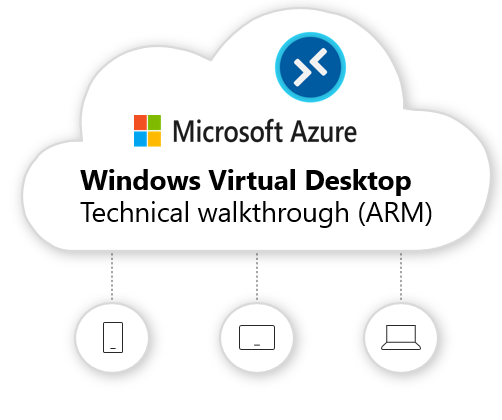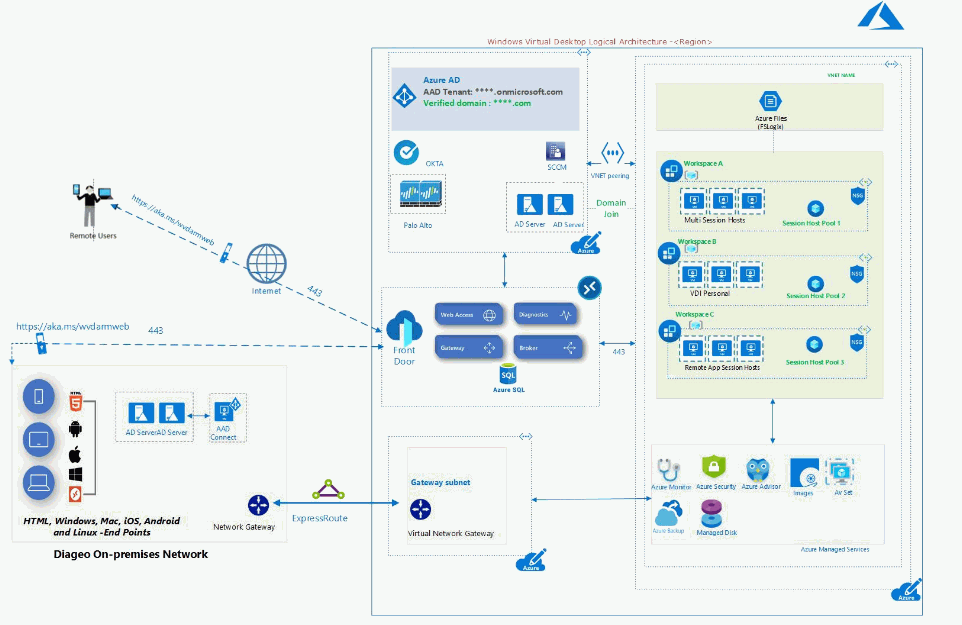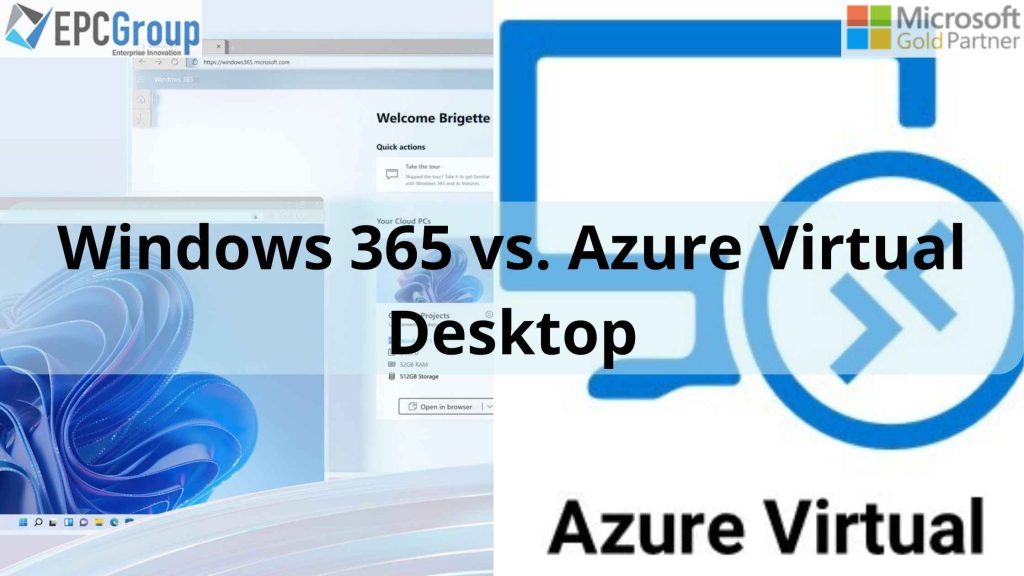Microsoft has two options for virtual desktops: Windows 365 vs. Azure Virtual Desktop. They’re both cloud-based offerings that allow you to run programs on your computer and access them from anywhere. However, some differences between them may make one better for a specific type of user. Let’s look at each option in more detail and see which is better for you.
Windows 365 vs. Azure Virtual Desktop have many advantages over traditional desktop computers. You don’t need to be close to your computer or have an internet connection to utilize them since, for instance, they let you access your files from anywhere over the internet. This can be especially useful if you need to view your papers while working remotely from a home office or a coffee shop with low connectivity or while traveling overseas.
These programs also have some drawbacks. For example, they usually require licensing fees—these licenses can add up quickly if you use them constantly! The other drawback is that they aren’t as secure as traditional desktops—which might not be something that matters.

What’s Different About Windows 365 vs. Azure Virtual Desktops?
Windows 365 vs. Azure Virtual Desktop use similar Microsoft cloud technologies. Although technically constructed on existing AVD components, Windows 365 uses a separate transactional mechanism (fixed price vs. consumption-based).
- Azure Virtual Desktop is a cloud-based desktop experience that allows users to run their existing applications and workloads on their hardware. Users can connect their devices via Wi-Fi or Ethernet and use any program they want. Users can also access their data remotely from anywhere in the world.
- Windows 365 is a subscription-based service that includes Office 365, which allows users to access Microsoft Office software with full functionality and features from any device. Business users can start working on documents from any device anytime without worrying about compatibility issues or whether they have enough space on their computer’s hard drive. The service also provides security updates and enhancements, so users always have up-to-date protection against viruses, malware attacks, and other online threats.
How To Deploy A Windows Server Virtual Machine Running On Azure under a new subscription
The Azure deployment of Windows Server is a fantastic method to use the cloud. However, it’s also a simple method to learn about Azure and its capabilities.
First of all, enterprise cloud PCs are Azure and Active Directory dependent. It would thus be ideal if you had an Azure subscription with a properly configured network with access to Active Directory and Azure AD Hybrid Join enabled.
Azure Active Directory (Azure AD) is not currently supported for Microsoft Cloud-Only deployments or hybrid deployments that use an on-premises Active Directory domain controller (DC). However, you can use the built-in Active Directory Connectivity (ADC) feature in your on-premises environment with this deployment model.
Microsoft recommends that you deploy your Windows Server on Azure using the following recommendations:
- Use at least two NICs per VM.
- Use at least one NIC per VM.
- Use private IP addresses for all VMs within the same subnet -No more than four NICs per subnet -No more than three NICs per subnet

How To Decide If You Need A Windows 365 Or Azure Virtual Desktop
Organizations should now consider which technologies are best for achieving their objectives. But the topic is more complicated than just Windows 365 vs. Azure Virtual Desktop; it’s possible that none of these services would be a suitable match. They might not be a wise choice for businesses that:
- This is not a universal rule if you have no existing infrastructure based in Azure and fewer than 50 users.
- If you have no administrators with Azure or virtual desktop expertise, we don’t recommend using Azure as your primary platform.
- We also don’t recommend using Azure if the environment is relatively stable but still changing rapidly over time–for example if you’re doing some work with multiple projects at once.
- You should also have relatively simple security and management considerations.
However, these two Microsoft services could be particularly appealing to businesses that:
- If you’re planning to use Microsoft’s Azure Virtual Desktop solution, you’ll need a significant pre-existing Microsoft investment, including Microsoft Endpoint Manager, Intune, Azure, Azure Active Directory, and other services.
- If your organization does not have any other virtual desktop investment in other products, it will be necessary to consider how often you currently deploy desktops.
- If you are deploying desktop computers regularly for employees or clients, then Azure Virtual Desktop may be a good fit for you.
- For organizations with frequent desktop deployments and features such as remote app streaming and cloud-based management, Azure Virtual Desktop may be an efficient way to manage those deployments while taking advantage of cloud-based management.
Agent and client apps in Windows 365 vs. Azure Virtual Desktop
Microsoft is in charge of overseeing the control plane in Windows 365. The control plane includes the web portal, gateway, connection broker, licensing, and diagnostics service. Microsoft hosts and manages all of the components, and administrators may communicate with them through a portal or API, while end users can do so using the AVD and cloud PC client apps.
Microsoft also oversees the control plane in Azure Virtual Desktop (AVD). The web portal and gateway are components of the control plane. Microsoft hosts and manages each component. In addition, they communicate with end users using AVD and cloud PC client applications.
Each virtual desktop runs an agent program, including AVD session hosts and Windows 365 cloud PCs. This agent handles the communication with the Microsoft-managed control plane. In addition, the agent is controlled and automatically updated by Microsoft.

Azure Virtual Desktop: How Cloud PC Licenses Work And What Are The Key Advantages?
Azure Virtual Desktop session hosts are regular VMs that can be deployed and utilized with all of Azure’s capabilities in a somewhat flexible manner. These session hosts can provide pooled desktops, where a VM can be used by numerous users who switch between such VMs often, or personal desktops, where a VM is devoted to a single user. Since these VMs operate under the client’s Azure subscription, the customer is responsible for the associated compute costs. Auto-scaling may drastically lower the cost of VMs in an AVD scenario because Azure compute pricing is usage-based.
A virtual machine (VM) permanently assigned to one user is a Windows 365 cloud PC (like personal desktops in AVD). The client is not liable for the compute expenses of running these VMs because they are part of Microsoft’s Azure subscription.
Windows 365 Enterprise Cloud PCs And Business Cloud PCs Require Hybrid Azure AD Join
A technique for integrating Azure Active Directory with your current Windows Active Directory infrastructure is called hybrid Azure AD join. This indicates that each one of your users will have access to Office 365 and cloud-based applications.
It would be preferable if you have a Windows AD environment to use Hybrid Azure AD join. You may use the Azure AD DS PaaS service and an existing Windows AD infrastructure to fulfill this. Although future support has just been announced, native Azure AD join is not currently supported.
Cloud PCs for Windows 365 Enterprise demand a hybrid Azure AD join. This indicates that you must enable Hybrid Join and sync classic Windows AD to Azure AD. Currently, Azure AD DS is not supported. This is because cloud-based business PCs are naturally attached to Azure AD and do not need (or support) Windows AD or Azure AD DS.
Azure Consultancy Services from Microsoft Cloud Solution Provider – EPC Group
Windows 365 vs. Azure Virtual Desktop are both cloud-based services that let you run apps on your device and access them from anywhere. But neither choice is precisely the same. With Windows 365, you can access Windows applications on any device with an internet connection, and it functions more like a typical desktop operating system. On the other hand, the focus of Azure Virtual Desktop is primarily on accessing Microsoft Office programs. Additionally, it incorporates several Windows 10 technologies to improve compatibility with other Microsoft hardware and applications.
With EPC Group, Azure Consulting IT Services, you will receive skilled, certified consultants who can help if you run into any functionality issues within your system. Our team has many years of experience and expertise in cloud solutions, and we are here to help your business optimize its resource utilization.










